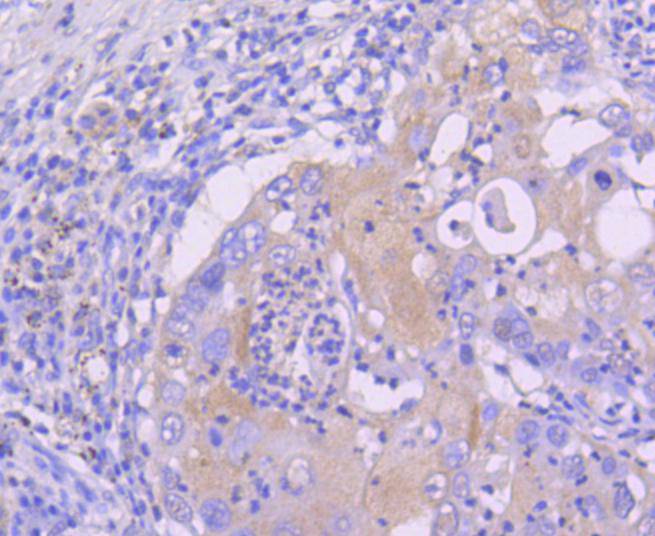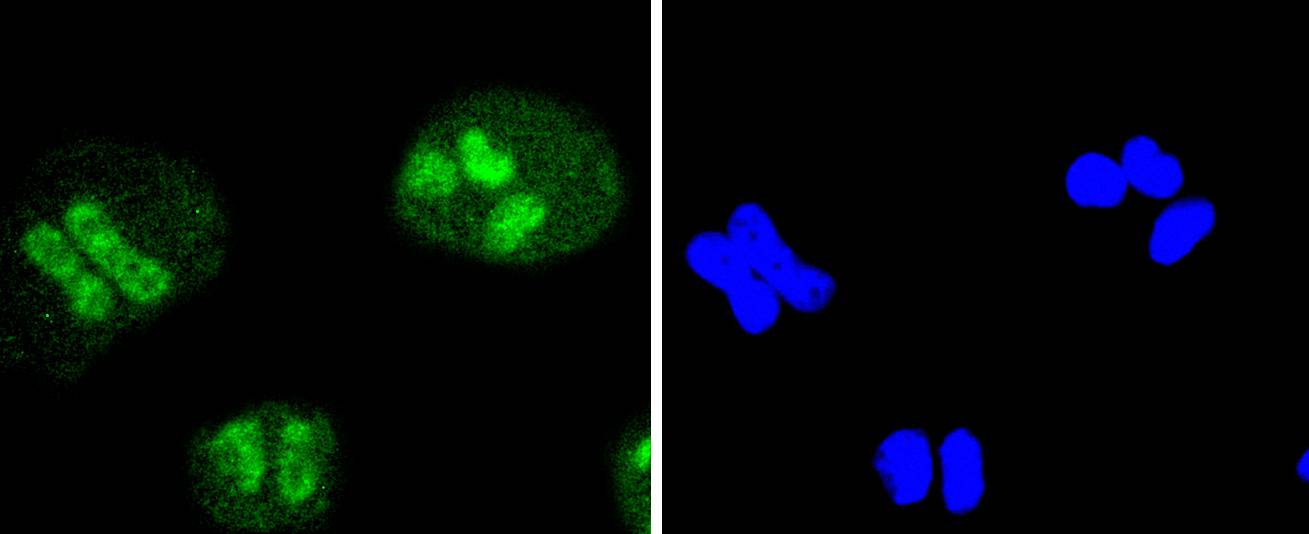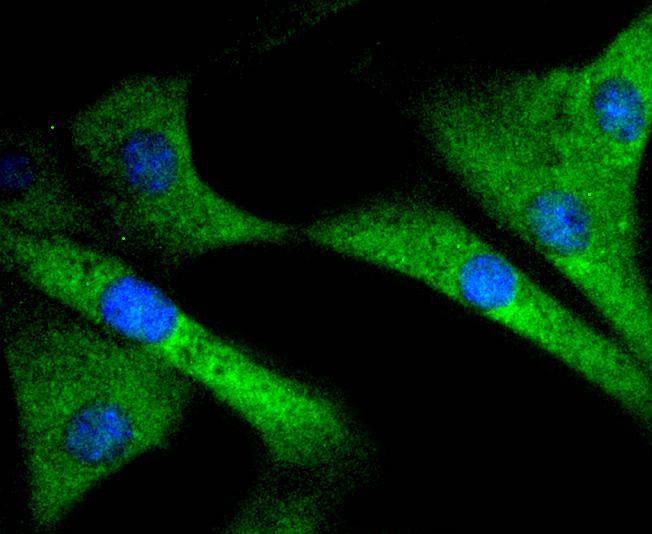Product Detail
Product NameSIRT1 Rabbit mAb
Clone No.SZ04-01
Host SpeciesRecombinant Rabbit
Clonality Monoclonal
PurificationProA affinity purified
ApplicationsWB, ICC/IF, IHC, IP
Species ReactivityHu
Immunogen Descrecombinant protein
ConjugateUnconjugated
Other Names75SirT1 antibody hSIR2 antibody hSIRT1 antibody HST2, S. cerevisiae, homolog of antibody NAD dependent deacetylase sirtuin 1 antibody NAD dependent protein deacetylase sirtuin 1 antibody OTTHUMP00000198111 antibody OTTHUMP00000198112 antibody Regulatory protein SIR2 homolog 1 antibody SIR1_HUMAN antibody SIR2 antibody SIR2 like 1 antibody SIR2 like protein 1 antibody SIR2, S.cerevisiae, homolog-like 1 antibody SIR2-like protein 1 antibody SIR2ALPHA antibody SIR2L1 antibody Sirt1 antibody SirtT1 75 kDa fragment antibody Sirtuin (silent mating type information regulation 2 homolog) 1 (S. cerevisiae) antibody Sirtuin 1 antibody Sirtuin type 1 antibody
Accession NoSwiss-Prot#:Q96EB6
Uniprot
Q96EB6
Gene ID
23411;
Calculated MW110 kDa
Formulation1*TBS (pH7.4), 1%BSA, 40%Glycerol. Preservative: 0.05% Sodium Azide.
StorageStore at -20˚C
Application Details
WB: 1:1,000-5,000
IHC: 1:50-1:200
ICC: 1:50-1:200
Western blot analysis of SIRT1 on Jurkat cells lysates using anti-SIRT1 antibody at 1/1,000 dilution.
Immunohistochemical analysis of paraffin-embedded human lung cancer tissue using anti-SIRT1 antibody. Counter stained with hematoxylin.
ICC staining SIRT1 in Hela cells (green). The nuclear counter stain is DAPI (blue). Cells were fixed in paraformaldehyde, permeabilised with 0.25% Triton X100/PBS.
ICC staining SIRT1 in NIH/3T3 cells (green). The nuclear counter stain is DAPI (blue). Cells were fixed in paraformaldehyde, permeabilised with 0.25% Triton X100/PBS.
ICC staining SIRT1 in SH-SY-5Y cells (green). The nuclear counter stain is DAPI (blue). Cells were fixed in paraformaldehyde, permeabilised with 0.25% Triton X100/PBS.
The silent information regulator (SIR2) family of genes are highly-conserved from prokaryotes to eukaryotes and are involved in diverse processes, including transcriptional regulation, cell cycle progression, DNA-damage repair and aging. In S. cerevisiae, Sir2p deacetylates histones in an NAD-dependent manner, which regulates silencing at the telomeric, rDNA and silent mating-type loci. Sir2p is the founding member of a large family, designated sirtuins, which contain a conserved catalytic domain. The human homologs, which include SIRT1-7, are divided into four main branches: SIRT1-3 are class I, SIRT4 is class II, SIRT5 is class III and SIRT6-7 are class IV. SIRT1 has the closest homology to the yeast Sir2p and is widely expressed in fetal and adult tissues. SIRT1 is highly expressed in heart, brain and skeletal muscle, with low expression in lung and placenta. SIRT1 regulates the p53-dependent DNA damage response pathway by binding to and deacetylating p53, specifically at Lys 382.
If you have published an article using product 48689, please notify us so that we can cite your literature.







 Yes
Yes



